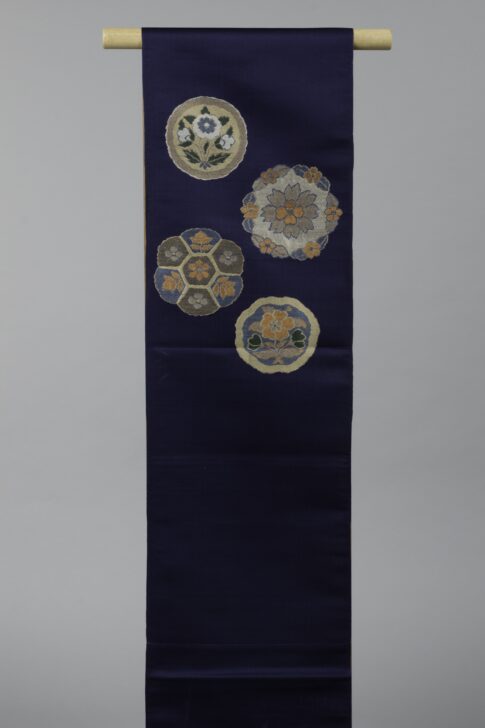Obi
Japanese

Description
Subject Matter:
This is a Nagoya obi in otaiko gara.
Nagoya obi were first produced at the end of the Taisho era, and are shorter than the more formal fukuro and maru obi. A portion of Nagoya obi fabric is folded and stitched in half to make tying easier.
Gara refers to the orientation, arrangement, and surface area of the patterns and pertains to a specific trend and obi tying style.
The patterning in the Otaiko gara type is minimal. A few concentrated spots of patterned motif lie on the obi while the rest is left blank. This style was invented during the Edo period (1615-1868) by the female entertainers in Fukugawa, an entertainment district in present-day Tokyo.
Physical Description:
Thin dark blue fukuro (single-sided) Obi with interwoven white, beige, orange, bronze, and light blue stylized floral motifs arranged within various circles and wreath-like shapes.
Usage Rights:
If you are interested in using an image for a publication, please visit https://umma.umich.edu/request-image/ for more information and to fill out the online Image Rights and Reproductions Request Form.